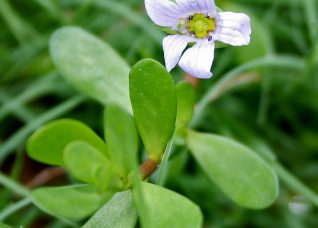
MinerAlert

MinerAlert
Bacopa monniera
Plantaginaceae
Brahmi*, Indian pennywort, water hyssop, thyme-leafed gratiola, herb of grace.
*In India, the common name “Brahmi” is also applied to a very different medicinal plant with similar medicinal properties, Centella asiatica, also known as “Gotu Kola”.

This creeping and succulent plant commonly grows in marshy areas throughout Asia, especially India, Sri Lanka Pakistan, Nepal, Vietnam, as well as in South America. Additionally, it grows in Hawaii and Florida.
The whole plant.
Safety/Precautions:
Before you decide to take any medicinal herb or herbal supplement, be sure to consult with your health care professional first. Avoid self-diagnosis and self-medication: Always be on the safe side!